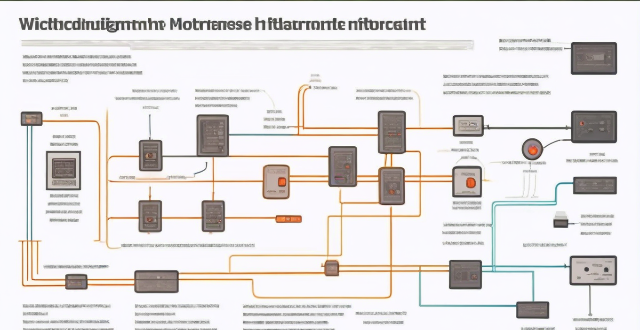System Management

What are the benefits of using a learning management system (LMS) ?
The article discusses the advantages of using a Learning Management System (LMS) in education and training. The benefits include improved accessibility and convenience, personalized learning experiences, efficient course management, collaboration and community building, data-driven decision making, and cost savings. LMSs centralize content, enable self-paced learning, offer flexible scheduling, incorporate adaptive learning technologies, track progress, and gamify the learning process to make it more engaging. They also automate administrative tasks, scale efficiently, integrate with other tools, facilitate discussions and group projects, support live interactions, collect analytics and reporting data, issue digital certificates, and allow for continuous improvement. Additionally, LMSs reduce travel expenses, promote resource efficiency, and enable scaling without additional costs. Overall, an LMS is a powerful tool for modern education and training initiatives.

Can you give examples of best practices in disaster risk management from different countries ?
Disaster risk management is a crucial aspect of ensuring the safety and well-being of communities worldwide. Here are some examples of best practices in disaster risk management from different countries: Japan is known for its advanced earthquake preparedness and response systems, including an early warning system, regular drills and training, and strong building codes. The United States has a well-established emergency management system that includes community preparedness programs, an integrated emergency management system, and public awareness campaigns. Norway has developed an early warning system for landslides, flood forecasting models, and avalanche mitigation strategies to protect against natural disasters. India has implemented a cyclone preparedness program, flood forecasting and early warning systems, and earthquake-resistant construction techniques in high-risk areas.

How does predictive analytics help in disease prevention and management within the healthcare system ?
Predictive analytics in healthcare can significantly improve disease prevention and management by identifying patterns and trends in patient data. It offers benefits such as early intervention, personalized treatment plans, enhanced operational efficiency, and informed decision-making. Applications include disease surveillance, chronic disease management, and patient care optimization. However, challenges like data privacy, quality, and the need for skilled data analysts must be addressed to fully realize its potential.

What are some innovative solutions for flood prevention and management ?
The provided text discusses innovative solutions for flood prevention and management, highlighting various strategies such as early warning systems, green infrastructure, smart water management systems, flood barriers and walls, and community engagement and education. Each strategy is briefly explained, emphasizing its key features and benefits in mitigating the impact of floods on lives and property. The conclusion emphasizes the importance of considering local conditions and needs when selecting appropriate measures for effective flood prevention and management.

How can stress management contribute to better personal health ?
Stress management is crucial for maintaining physical and mental health, as it can reduce the risk of chronic diseases, improve sleep quality, boost the immune system, reduce anxiety and depression symptoms, enhance cognitive function, and increase resilience. Incorporating stress management techniques into daily routines can lead to better overall well-being and a higher quality of life.

How does stress management affect women's well-being ?
Stress management plays a crucial role in women's well-being, affecting their physical, mental, and emotional health. By managing stress, women can improve their immunity, sleep quality, and reduce the risk of chronic diseases. It also helps in improving mood, concentration, and reducing anxiety and depression. Stress management can lead to improved relationships, self-esteem, and increased resilience. Overall, it is essential for women's well-being and can lead to a happier and healthier life.

How can small businesses improve their credit management ?
Credit management is an essential aspect of running a successful business. It involves managing the company's debt, ensuring timely payments to vendors and suppliers, and maintaining a good credit score. Here are some tips on how small businesses can improve their credit management: 1. Set up a system for tracking invoices and payments. 2. Negotiate better terms with vendors and suppliers. 3. Pay bills on time. 4. Monitor your credit score regularly. 5. Keep personal and business finances separate. 6. Seek professional advice when needed.

How does ecological design address issues related to water management and consumption ?
Ecological design addresses water management and consumption issues through strategies such as rainwater harvesting, water recycling, using native plants in landscaping, installing efficient water fixtures, permeable paving, smart water management systems, and promoting education on water conservation.

How does regular exercise contribute to overall health management ?
This text discusses the importance of regular exercise for overall health management, highlighting its physical, mental, and emotional benefits. It emphasizes that exercise not only helps maintain physical health but also significantly contributes to mental and emotional well-being. The article lists various ways in which regular exercise contributes to overall health management, including improving cardiovascular fitness, aiding in weight management, enhancing muscle and bone health, boosting the immune system, preventing chronic diseases, reducing stress, improving mood, enhancing cognitive function, boosting self-esteem, providing opportunities for social interaction, and contributing to personal achievement. The text concludes by emphasizing that regular exercise is a crucial tool for managing overall health and that incorporating it into one's lifestyle is one of the best investments one can make for their health and well-being.

Can exercise boost the immune system ?
Exercise can indeed boost the immune system through various mechanisms, including enhanced circulation, reduced inflammation, weight management, stress reduction, improved sleep, increased self-esteem and mental health, microbiome diversity, temperature regulation, prevention of chronic diseases, and social interaction. Regular moderate exercise is generally considered beneficial for the immune system, but it's essential to consult with healthcare professionals to determine the appropriate amount and intensity of exercise for individual needs and circumstances.

What are the benefits of using a combination motor drive system ?
Combination motor drive systems offer benefits such as improved efficiency, increased reliability, flexibility, and enhanced control. These systems combine the advantages of different types of motors to create a more efficient and reliable drive system. They are ideal for a wide range of applications and can help businesses save money on energy costs while reducing downtime and maintenance requirements.

How can companies implement effective risk management strategies ?
Effective Risk Management Strategies for Companies Risk management is a critical aspect of any business operation. It involves identifying, assessing, and prioritizing potential risks that could impact the company's objectives. Here are some effective risk management strategies that companies can implement: 1. Identify Potential Risks: The first step in implementing effective risk management is to identify potential risks. This involves analyzing the company's operations and processes to determine what could go wrong. Some common types of risks include financial risks, operational risks, strategic risks, and compliance risks. 2. Assess and Prioritize Risks: Once potential risks have been identified, they need to be assessed and prioritized based on their likelihood and potential impact. This involves assigning each risk a score based on its severity and probability of occurrence. The risks can then be ranked in order of priority, with the most significant risks being addressed first. 3. Develop Risk Mitigation Plans: For each identified risk, a mitigation plan should be developed. This plan should outline the steps that will be taken to reduce or eliminate the risk. Mitigation plans can include avoidance, reduction, transfer, or acceptance. 4. Monitor and Review Risks Regularly: Risk management is an ongoing process, and companies should regularly monitor and review their risks. This involves tracking changes in the business environment and updating risk assessments accordingly. It also involves evaluating the effectiveness of risk mitigation plans and making adjustments as needed. In conclusion, effective risk management strategies involve identifying potential risks, assessing and prioritizing them, developing mitigation plans, and regularly monitoring and reviewing them. By implementing these strategies, companies can reduce their exposure to risks and protect their operations and bottom line.

How does regular exercise contribute to boosting the immune system ?
Regular exercise has numerous health benefits, including boosting the immune system. It promotes increased blood circulation, reduces inflammation, helps in weight management, reduces stress, improves sleep quality, enhances gut health, increases antioxidant capacity, supports cardiovascular health, enhances mental health, and contributes to increased longevity. Incorporating regular physical activity into your lifestyle can support a strong and resilient immune system.

What are the challenges faced when designing a multi-motor drive system ?
The article discusses the challenges of designing a multi-motor drive system, including coordination between motors, power distribution, and synchronization. It emphasizes the importance of control algorithms, communication systems, mechanical design, efficiency optimization, power management, thermal management, timing control, feedback mechanisms, and mechanical design in achieving proper operation of the system. The article concludes that careful consideration of these factors is crucial for creating efficient and effective multi-motor drive systems.

What are some successful examples of community climate adaptation initiatives ?
Community climate adaptation initiatives are local efforts to prepare for and respond to the impacts of climate change. These initiatives can include a wide range of activities, from building resilient infrastructure to implementing sustainable land use practices. Here are some successful examples of community climate adaptation initiatives: 1. New York City's Coastal Zone Management Plan 2. Copenhagen's Cycling Infrastructure 3. Amsterdam's Water Management System 4. San Francisco's Urban Heat Island Mitigation Program 5. Curitiba's Bus Rapid Transit System 6. Rotterdam's Flood Protection Measures

How does a distributed energy system work ?
A distributed energy system (DES) is a decentralized approach to power generation and distribution that utilizes renewable energy sources, energy storage devices, and smart grid technologies. The system works by generating electricity locally from renewable sources, storing excess energy for later use, and distributing power efficiently within a local area. This setup enhances efficiency, reliability, and sustainability while potentially reducing costs. DESs offer flexibility and adaptability to changing energy needs and technological advancements, positioning them as a crucial element in the future of energy infrastructure.

How can blockchain technology be used in supply chain management ?
Blockchain technology is poised to revolutionize supply chain management by offering transparency, traceability, and security. Smart contracts automate transactions, while secure data sharing promotes collaboration. The technology also reduces manual processes, paperwork, and enhances compliance.

What role does recovery play in a sports health management plan ?
Recovery is a crucial component of sports health management, enhancing performance, preventing injuries, promoting mental health, and maintaining a balanced lifestyle. It involves activities like sleep, nutrition, stress reduction techniques, and time management to ensure athletes can perform at their best while staying healthy and motivated.

What is a distributed energy system ?
Distributed energy systems (DES) are integrated systems that generate, store, and manage energy near the point of consumption. They typically include renewable energy sources, energy storage devices, and control systems. The primary goal is to optimize energy production and consumption while minimizing environmental impact and enhancing energy security. Key features of DES include decentralized generation, renewable energy sources, energy storage, intelligent control systems, flexibility, and scalability. Benefits of DES include increased energy efficiency, improved reliability, reduced environmental impact, enhanced energy independence, and cost savings. Examples of DES include residential solar PV systems, commercial buildings with cogeneration, microgrids, and community energy projects.

What is credit management ?
Credit management is the process of managing and controlling the use of credit by individuals or businesses. It involves evaluating borrowers' creditworthiness, determining the amount of credit to extend, monitoring loan repayment, and taking action for late payments. Key components include credit analysis, evaluation, loan monitoring, collections management, risk management, and customer relationship management. Effective credit management benefits include reduced default risk, improved cash flow, increased customer satisfaction, and enhanced reputation.

How does risk management relate to compliance and regulatory requirements ?
Risk management and compliance are interconnected aspects of organizational operations, aimed at safeguarding against potential losses and legal issues. Risk management identifies and prioritizes risks impacting objectives, while compliance ensures adherence to laws and regulations. An integrated approach enhances efficiency, and collaboration between departments is key for success. Regulatory requirements significantly influence risk management and compliance strategies, with direct rules and indirect environmental changes. Understanding these dynamics is vital for maintaining reputation and avoiding compliance breaches.

How do different countries approach flood control and management ?
Flood control and management strategies vary across different countries, influenced by factors such as geographic location, climate conditions, economic resources, and technological advancements. The United States relies on early warning systems, flood insurance programs, and floodplain zoning regulations. The Netherlands invests in flood barriers and dikes, water management policies, and international cooperation. China focuses on the Three Gorges Dam, flood prevention campaigns, and reforestation efforts. India adopts community-based approaches, integrated water resource management, and disaster risk reduction programs.

How do virtual power plants utilizing renewable energy affect grid stability and management ?
**The Impact of Virtual Power Plants Utilizing Renewable Energy on Grid Stability and Management** Virtual power plants (VPPs) aggregate various renewable energy resources to optimize electricity production and supply, enhancing grid stability and management. They balance supply and demand, reduce transmission losses, and enhance reliability by integrating distributed energy resources into a controllable network. VPPs offer operational flexibility, optimize resources, integrate electric vehicles, and facilitate energy trading. However, they also pose challenges such as complexity in management, interoperability issues, security concerns, and the need for regulatory adaptation. Overall, VPPs utilizing renewable energy sources have a profound effect on grid stability and management, offering enhanced reliability, efficiency, and flexibility, but require careful planning and adaptation to fully realize their potential.